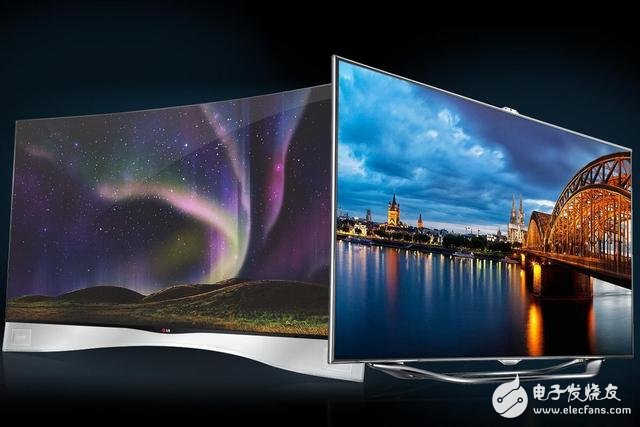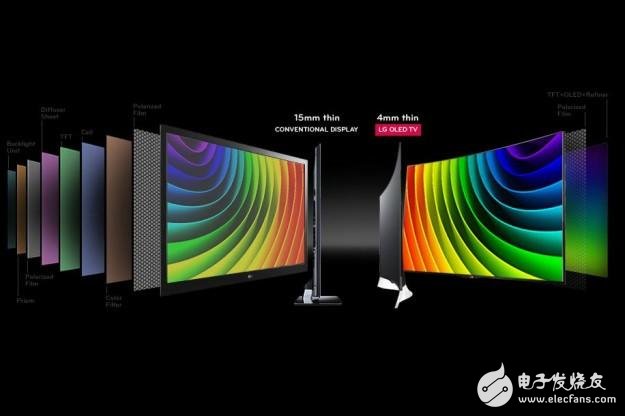We can't deny the potential of OLED as a display technology of the next era. Its unique physical characteristics are almost "trick" for liquid crystal technology. At present, the biggest problem of OLED is still the cost caused by the low yield of large panel cutting. problem.
OLEDs have fully realized electroluminescence without the need for backlighting. Therefore, the color can be displayed "native". Because of the relationship between the LED and the LED, the picture is obviously affected by the backlight, just as the surface of the picture is covered with a layer of white yarn, which affects the picture quality. In other words, the presence of the backlight not only affects the dark field performance of the liquid crystal product, but also has a negative impact on the picture from beginning to end. The response time is a flaw in the dynamic fluency of the liquid crystal technology, while the backlight is a flaw in the picture quality.
In the field of consumer electronics, OLED technology is no longer a new concept. Since 2001, OLED technology displays have been used in mobile phones. Now, LG has begun to popularize OLED display technology in the TV field, so consumers have begun to have a strong interest in OLED products.
So is OLED TV more advantageous than traditional LED/LCD TV? What are the deficiencies of OLED? We can understand and contrast through some simple introductions.

What is LED?
The full name of the LED is a light-emitting diode. These small semiconductor diodes convert electrical energy into light energy. LEDs are widely used in the field of illumination due to their relatively small and compact size, and have high brightness and good illumination. However, compared with TV, the size of LED is still not small enough, so LED is currently only used as the background light source of LCD TV.
What is OLED?
The full name of OLED is organic light emitting diode. Simply put, OLEDs are derived from organic compounds and emit electricity. Each pixel of an OLED TV can be illuminated independently, so it can be selectively turned off, which is why OLEDs can bring a full black background.
Who is better with OLED and LED/LCD?

In the past, OLED TVs performed better than LED/LCD TVs in almost all areas, but due to the recent emergence of quantum dot technology and improved backlighting, LED/LCD TVs themselves have doubled their performance three years ago. improvement. Today's LED/LCD TVs have better black level performance and greatly improve color effects and reduce light leakage. So the difference between OLEDs and LED/LCD TVs with quantum dot technology is not that great. In addition, our comparison is not limited to image quality, so we can compare OLED and LED/LCD separately through different aspects.
Black level
The ability to display dark colors on the screen is arguably the most important of the many parameters of image quality. Higher black level levels result in higher contrast and richer colors. Therefore, the overall quality of the image will be more dazzling. When we mentioned the black level, OLED undoubtedly dominated and undisputedly became the winner.
Since the liquid crystal backplane of the LED TV uses the backlighting principle, even if there is an advanced dimming technology, the brightness of the LED backlight can be partially reduced, and the black level of the LED TV can be improved. But although the progress is obvious, and the impact of backlight is minimized, there is still a certain gap compared with OLED.
The OLED TV can turn off the illumination function of the pixel without generating any light source, so it can basically present a complete black.
Winning: OLED
brightness
LED TV has considerable advantages in brightness comparison. LED technology has become very intelligent now, so with the addition of quantum dot technology, LED TVs have achieved the ultimate in brightness.
Although OLED TVs are also very "smart", there is no problem in black level and contrast, but if you adjust the brightness of OLED TV to the maximum, it will not only reduce the life of the pixel, but also take a certain time to return to black again. transition.
Winning: LED/LCD
Picture color
Although OLEDs have a natural advantage, LED quantum dot technology can achieve the same level of color accuracy, color quantity and brightness as OLEDs by improving the purity of the backlight.
At present, most high-end ultra-high-definition TVs are excellent in color performance and have greater potential in the future.
Winning: draw
Response time
OLED is much shorter in response time than LED/LCD TV. It can be said that OLED is the shortest TV panel technology on the market. Therefore, OLED is also the absolute winner in this respect, and less response time means that the blurring of moving targets can be reduced.
Winning: OLED
Viewing angle
OLED has once again become a winner. Although the IPS display produced by LG has a huge improvement in the viewing angle of the traditional VA liquid crystal display, it still cannot be compared with the OLED panel, and the latter can reach a maximum viewing angle of 84 degrees. At present, the best viewing angle of the best IPS LCD panel is only 54 degrees.
Winning: OLED
Panel size

LG has just launched a 77-inch OLED TV, which is a huge leap compared to the previous 65-inch. However, LED/LCD has more space in the panel size. There are many different products on the 85- to 90-inch TV, and some even have 120-inch LED/LCD TVs. Therefore, in the limit size of the display panel, this time winning is LED/LCD.
Winning: LED/LCD
Service life
LG said its OLED TV can be used for 5 hours per day for 50 years at 50% brightness. Whether such a commitment is true or not can not be verified at present. After all, it is only three years since the advent of OLED TV. However, from the current point of view, more traditional LED/LCD TVs seem to be more reliable in terms of service life.
Winning: LED/LCD
Screen aging

Perhaps here, the word aging is a bit too serious. For most ordinary consumers, this problem is basically not faced.
We all know that the traditional CRT TV will have the problem of screen aging. If the screen displays the same still picture for a long time, it will “burn the screen†and cause image sticking. The reason for this problem is that the phosphor coating on the back of the screen does not get a "rest" for a long time and causes wear, resulting in a problem of "burning the screen". Therefore, it is accurate to say that the aging of the screen is actually a phenomenon of burn-in.
Later plasma TVs and now OLED TVs also face this problem, and phosphor materials will decrease over time. If a pixel displays the same content for a long time, it will begin to darken earlier, and the picture will obviously be "black" compared to other pixels. However, in the display of life, not everyone will encounter such problems, as long as we do not intentionally damage, there is no problem. Of course, it should be noted that if we watch channels with TV station "Taiwan" for a long time, such as ESPN Sports, there will be aging problems in the corners of the station logo.
LED/LCD has no such problem as OLEDs, so the winner is LED/LCD.
Winning: LED/LCD
power consumption
OLED panels are thin and do not require a backlight, so OLEDs are more excellent in thickness than LEDs/LCDs. It is also smaller in power consumption than LED/LCD, and it saves power in the same time.
Winning: OLED
price
Years ago, LED/LCD TVs were synonymous with high prices, but the price of LED/LCD TVs can now be purchased for an OLED TV. For example, the 55-inch LG B6 OLED TV is priced at 2,500 US dollars (about RMB 16,930 yuan), basically in a slowly decreasing trend. The price of LED/LCD TVs, including Sony and Samsung, is about $1,700 (about RMB 11,510) to $2,000 (about RMB 13,540), which is cheaper than OLED TVs.
Winning: LED/LCD
in conclusion
In terms of picture quality, OLED still has better image quality than LED/LCD TV with quantum dot technology, although the latter has made considerable progress. At the same time, OLED TVs are lighter and thinner, and they are more power efficient, and have the best viewing angles to date. Although the price is still a bit expensive, it is starting to get cheaper.
So overall, OLED TVs are still better than LED/LCD TVs. But for now, LED/LCD is more cost-effective. How to choose depends on your personal preferences.
BLPS laser safety protective device is designed for personal safety used on hydraulic bender.
The dynamic test technology it used has passed the Type 4 functional safety assessment by TUV, and get the national invention patent. The product reaches the advanced technological level of similar products.
BLPS laser safety device provides protection zone near the die tip of the bender to protect fingers and arms of the operator in close to the upper mold die tip. It is the most effective solution so far to preserves the safety and productivity of the bender.
Press Brake Protection,Laser Guarding Device,Press Brake Guarding Systems,Press Brake Guarding
Jining KeLi Photoelectronic Industrial Co.,Ltd , https://www.sdkelien.com